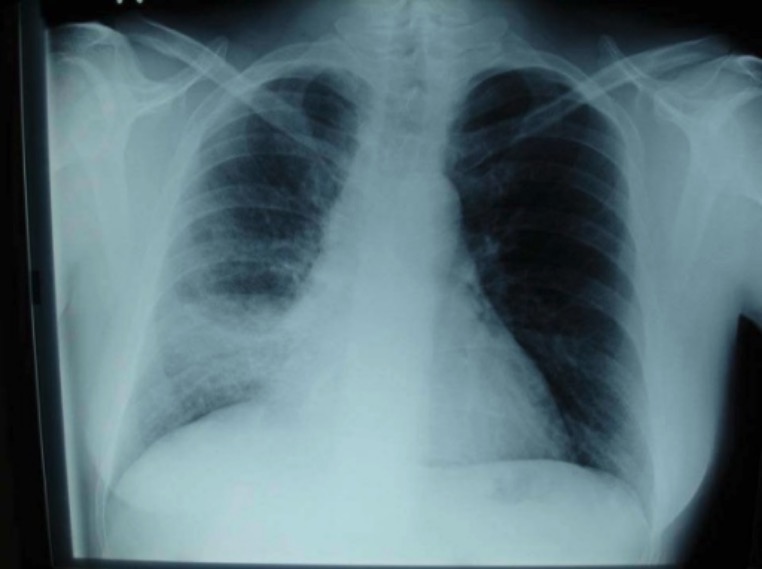Playlist
Show Playlist
Hide Playlist
Influenza A: Pathology
-
Slides InfluenzaA InfectiousDiseases.pdf
-
Reference List Infectious Diseases.pdf
-
Download Lecture Overview
00:02 So let’s talk about the pathogenesis of this virus. 00:07 The hemagglutinin spike is the spike that is the attachment protein. 00:14 This is what’s going to attack a target respiratory epithelial cell. 00:21 Now, coding all of our respiratory epithelial cells is sialic acid, and so, the hemagglutinin spikes are able to attach to sialic acid on respiratory epithelial cells. 00:40 Once they are attached, the virus then is internalized into an endosome and that’s where another envelope protein kicks in, known as the M2 protein. 00:59 The M2 protein acts as an ion channel. 01:03 So you had the virus in an endosome, and then the M2 protein activates acting as an ion channel and it allows hydrogen ions from the cell to enter that endosome, and that sparks the uncoding of the virus. 01:27 So now the virus is loose in the cell cytoplasm. 01:33 And of course, the viral gene segments, they go to the cell nucleus, and what the virus is trying to do is direct our chromosomes to make more copies of influenza virus. 01:50 So they do that by synthesizing their own messenger RNA and that messenger RNA is acted upon by our ribosomes making new influenza virus particles near the surface of the infected cell. 02:14 That’s when the neuraminidase spikes start their activity. 02:21 Now, I didn’t tell you this, but sialic acid is actually a derivative of N-acetylneuraminic acid, and so that’s what’s on the cell surface. 02:34 Well, if you remember, if a virus is trying to come out of a cell and it’s got those hemagglutinin spikes where they’re going to stick to the sialic acid and the virus will never get out. 02:50 So somehow, as the virus emerges, something’s got to be done about that sialic acid to prevent the hemagglutinin spikes from causing the virus to stick there in the infected cell. 03:02 So the neuraminidase spikes get rid of sialic acid on that cell so that the virus can emerge. 03:16 Without the neuraminic acid spike, the virus gets stuck inside the target cell. 03:22 And once it’s out, it can go down the respiratory tree and infect an adjacent cell. 03:30 So what influenza does to the respiratory epithelial cells is cause great damage to them. 03:40 Tissue necrosis, I think you can see in this particular image that the outer surface of the respiratory epithelial cell is being stripped away. 03:52 And if you think about what’s happening, the respiratory tree in a severe case of influenza can be totally denuded of its epithelium. 04:04 Well, what gets denuded of course, are the cells that have cilia and the mucous cells. 04:11 So can you imagine that the respiratory tract is now defenseless? And so if, for example, a staphylococcal bacterium gets in there, you could have staphylococcal pneumonia and a very severe case of influenza because you don’t have the normal mucosal defenses, so you just strip away large portions of the epithelium. 04:40 Well, the patient is going to feel that with initially a nonproductive cough starts out without productivity, a severe sore throat, and maybe symptoms of a typical viral infection with nasal obstruction. 04:59 Picture what’s going on in the respiratory epithelium.
About the Lecture
The lecture Influenza A: Pathology by John Fisher, MD is from the course Upper Respiratory Infections.
Included Quiz Questions
What is the function of the HA (hemagglutinin) spike on the influenza virus?
- Allows the virus to attach to the sialic acid on target respiratory epithelial cells.
- Allows the virus to enter the nucleus of the target respiratory epithelial cells.
- Allows the virus to use the human ribosomes to replicate.
- Allows the replicated viruses to be released from the epithelial cells.
- Acts as an ion channel to allow the virus to enter the nucleus of the human cell.
What is the function of the M2 surface protein on the influenza virus?
- Acts as an ion channel allowing hydrogen ions to enter virus and release it's genetic material into the human cell cytoplasm.
- Allows the virus to attach to the sialic acid on target respiratory epithelial cells.
- Allows the virus to use the human ribosomes to replicate.
- Cleaves sialic acid on the surface of the human cell membrane causing respiratory epithelial damage.
- Allows the virus to be internalized into an acid endosome in the respiratory epithelial cells.
How does the influenza virus replicate itself and attack more cells?
- The virus replicates itself intracellularly by using human ribosomes and releases from the human cell by cleaving sialic acid on the cell surface with the NA (neuraminidase) spike.
- The virus replicates extracellularly and travels in the interstitial fluid to attack cells down the respiratory tree.
- The virus replicates itself intracellularly by using human ribosomes and releases from the human cell by cleaving sialic acid on the cell surface with the HA (hemagglutinin) spike.
- The virus replicates extracellularly using it's own tRNA and ribosome, then attacks epithelial cells by attaching to the M2 surface proteins.
- The virus replicated intracellularly using human mRNA and ribosomes, then exits the cells through the M2 surface protein that acts as a membrane pore.
What allows for bacterial super infections during an influenza infection?
- The extensive damage done to the respiratory epithelium by the virus make the patient more susceptible to bacterial superinfection.
- The immunosuppression caused by the viral damage to T-helper cells makes the patient more susceptible to infections.
- The bacteria use the M2 protein on viruses as cofactor for entering the human cells.
- The bacteria piggy back on the HA spike on the viral cell surface and enter the respiratory cells via endosomes.
- The high fevers caused by the influenza virus make patients more susceptible to bacteria.
Customer reviews
5,0 of 5 stars
| 5 Stars |
|
1 |
| 4 Stars |
|
0 |
| 3 Stars |
|
0 |
| 2 Stars |
|
0 |
| 1 Star |
|
0 |
Very informative. Helpful in provding explaination I can reuse when describing why influenza is harmful to the lungs





